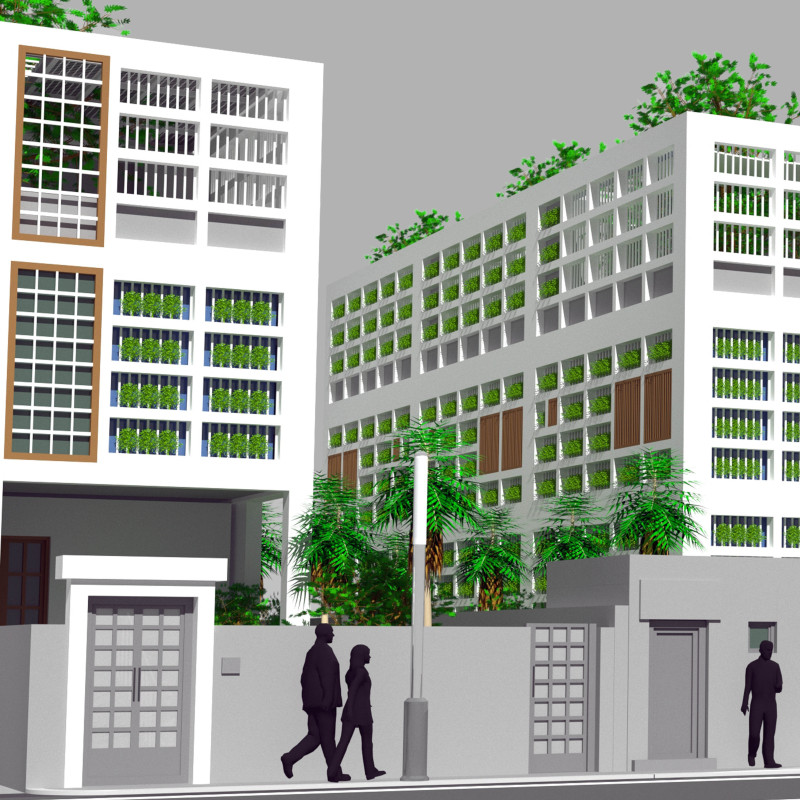5 key facts about this project
At its core, the architectural concept revolves around the integration of indoor and outdoor spaces, effectively blurring the lines between nature and built form. The design utilizes various materials, including concrete, glass, and steel, each chosen for their durability, structural integrity, and ability to harmonize with the surrounding landscape. The careful selection of these materials facilitates a modern yet timeless aesthetic that resonates with the project's function, which serves as a community hub. This structure not only accommodates diverse activities but also promotes social interaction, reflecting the increasing emphasis on community-oriented design.
One of the key components of the project is its layout, which strategically organizes spaces to optimize natural light and ventilation. Large expanses of glass are employed to create an inviting atmosphere that encourages occupants to engage with the environment. This element of the design also contributes to energy efficiency, minimizing the need for artificial lighting during daylight hours. The careful positioning of windows and openings allows for cross-ventilation, ensuring comfort throughout the year.
The exterior façade demonstrates a modern interpretation of traditional architectural elements, subtly echoing regional motifs while incorporating contemporary materials. This aspect of the design emphasizes a dialogue with local context, acknowledging cultural heritage while pushing towards innovation. Textured concrete surfaces, alongside glass panels, create a visually appealing contrast that adds depth to the overall appearance of the building.
The roof design is particularly noteworthy, featuring green roofing and solar panel integration, showcasing a commitment to sustainability and energy conservation. This approach not only enhances the building’s ecological footprint but also provides additional green space for the community. The consideration for environmental impact reflects a broader trend in modern architecture towards responsible building practices.
Internally, the design is flexible, allowing for various configurations depending on user needs. Open-plan spaces can be adapted for different functions, whether it be workshops, events, or communal gatherings. This flexibility is achieved through movable partitions and modular furniture, underscoring the project's adaptability. The interiors are characterized by a palette of natural colors and finishes that aim to create a calming and welcoming environment.
Unique design approaches are evident throughout the project, particularly in its engagement with the surrounding landscape. A series of outdoor terraces and landscaped gardens provide not only aesthetic value but also promote biodiversity, enhancing the local ecosystem. These areas serve as extensions of the indoor spaces, encouraging users to spend time outdoors and fostering a stronger connection with nature.
Overall, the project stands out due to its holistic approach to architecture, blending functionality, sustainability, and aesthetic appeal. It embodies current architectural trends while addressing the needs of its users and the environment. For those interested in a deeper understanding of this project, details pertaining to architectural plans, sections, and various design ideas provide essential insights into the thought processes and strategies that shaped this remarkable piece of architecture. Exploring these elements further can offer a comprehensive view of how contemporary architecture can successfully navigate the complexities of modern life while remaining rooted in environmental and social consciousness.


 Yasser Hassan Mahmoud Sorour
Yasser Hassan Mahmoud Sorour 






















